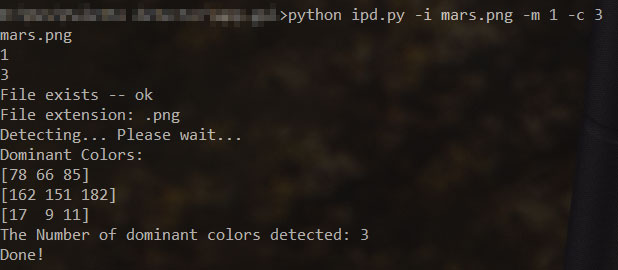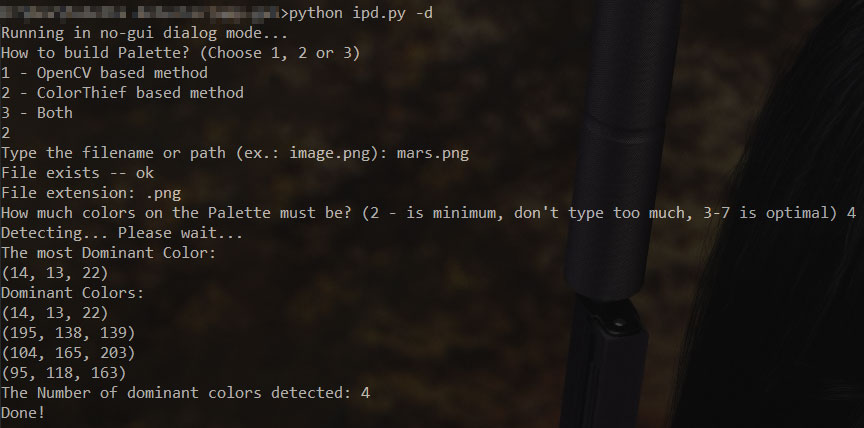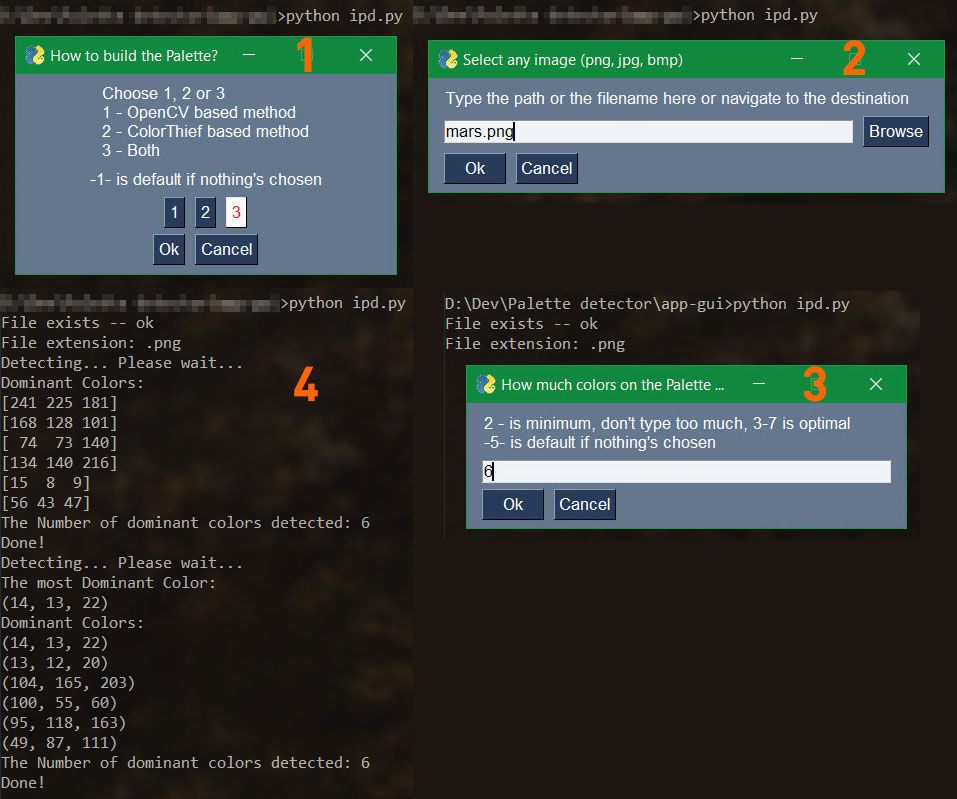Fast and accurate image RGB palette detector by Eugene Gourieff
Project description
Image Palette Detector
This is a simple python application that detects dominant color of your source image and create an output palette combined with the source image.
Guide:
Interface
Installation
Usage
Example
Interface
Application has 3 types of the user-interface:
- the comand-line with arguments:

- the dialog with no-GUI:

- the dialog with GUI:

Installation
Just download or clone the repo
git clone https://github.com/Gourieff/img-palette-detector
and install requirements:
pip install -r requirements.txt
or
pip install opencv-python; colorthief; argparse; pysimplegui
You can also install it as a package:
pip install imgpd
Usage:
python ipd.py -i "C:\my super images\image_file_name.png" -m "3" -c "5"
If you installed as a package:
for Windows users
py -m imgpd -i "C:\my super images\image_file_name.png" -m "3" -c "5"
for Linux/MacOS users:
imgpd -i /home/user/images/image_file_name.png -m 3 -c 5
Where optional arguments are:
-i PATH_TO_IMAGE Path to the image file
-m METHOD Method to build the Palette: 1 - OpenCV based method, 2 - ColorThief based method, 3 - Both
-c COLORS_COUNT How much colors on the Palette must be: 2 - is minimum, don't type too much, 3-7 is optimal
-d To run Application in the dialog mode w/o GUI
or just type for help: python ipd.py -h or imgpd -h
You can also run the App in the dialog mode
with GUI:
python ipd.py or imgpd
without GUI:
python ipd.py -d or imgpd -d
Then you see the dialog:
> How to build Palette? (Choose 1, 2 or 3)
> 1 - OpenCV based method
> 2 - ColorThief based method
> 3 - Both
Type 1, 2 or 3 and proceed to the next step:
> Type the filename or path (ex.: image.png):
Type a full or a relative path to your image or just an image name if your image is at the same folder:
C:\my super images\image_file_name.png
or
/home/user/images/image_file_name.png
or
image_file_name.png
Proceed to the next step:
> How much colors on the Palette must be? (2 - is minimum, don't type too much, 3-7 is optimal)
And type how much color must be in the Palette, for example:
5
Then wait a little for the result.
Example:
$ imgpd -d
> How to build Palette? (Choose 1, 2 or 3)
> 1 - OpenCV based method
> 2 - ColorThief based method
> 3 - Both
>> 3
> Type the filename or path (ex.: image.png):
>> sample/image.png
> How much colors on the Palette must be? (2 - is minimum, don't type too much, 3-7 is optimal)
>> 5
Source Image:

Output Result:
Method 1:

Method 2:

For most images Method 1 is more accurate, but for some images (as shown above) Method 2 will give you a better result, so I recommend to use 'Both' and then choose which is better.
Project details
Release history Release notifications | RSS feed
Download files
Download the file for your platform. If you're not sure which to choose, learn more about installing packages.










